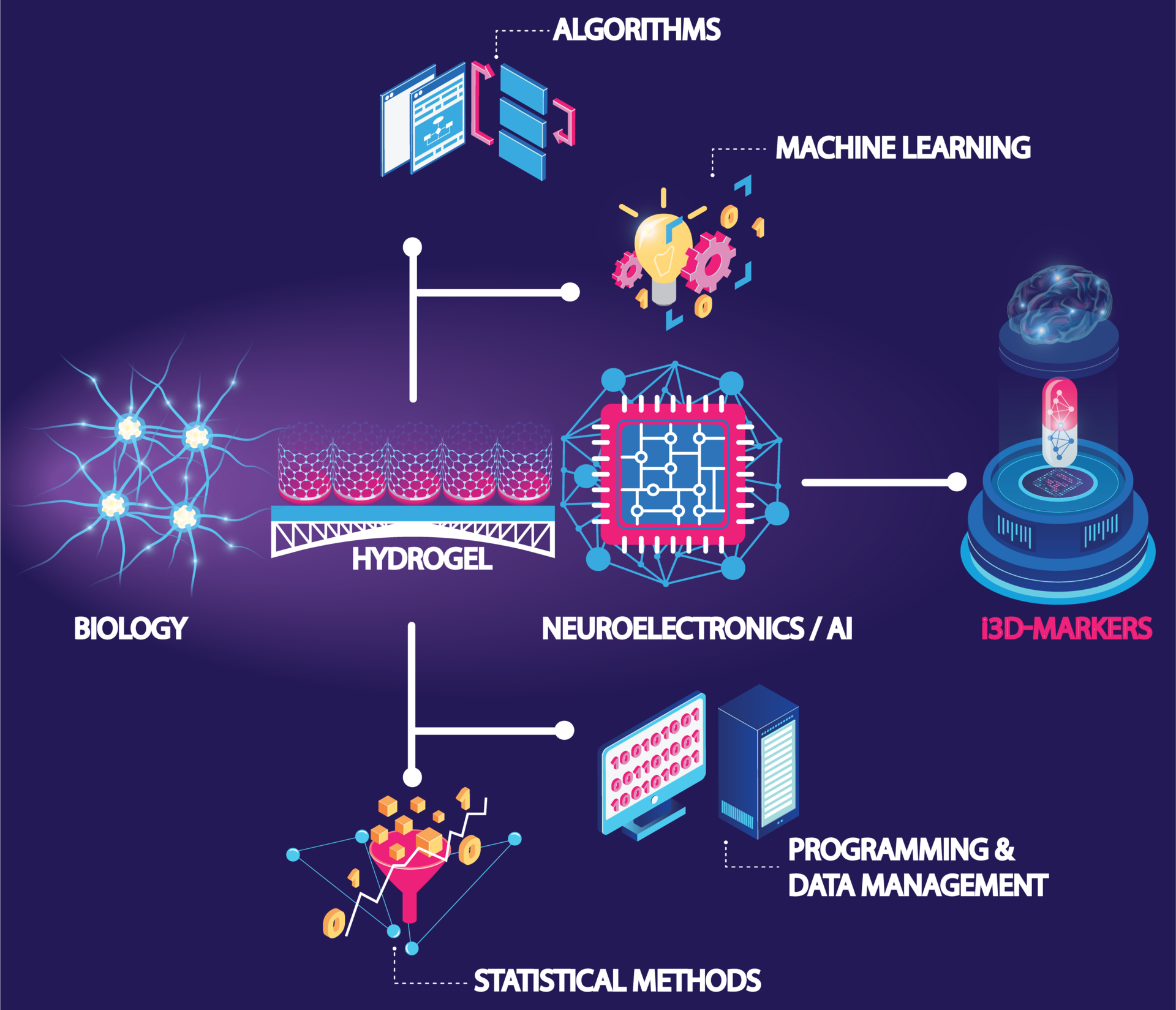i3D-Markers
With the help of "i3D markers" - Dr. Hayder Amin and Dr. Caghan Kizil from the DZNE site in Dresden want to accelerate the development of drugs against brain diseases. To this end, they are combining high-density microelectrode arrays and three-dimensional networks of human nerve cells to form a measuring system. Substances to be tested are dropped onto this system and the reaction of the nerve cells is determined using artificial intelligence. With their method, they want to optimize the selection of promising drug candidates for clinical trials and help avoid dead ends in the development pipeline.
The Dresden researchers' concept fuses neuroelectronics with an innovative cell culture method. i3D-Markers uses neuronal cell cultures coupled to a microchip. That is, neurons are grown on electronic components that contain densely arranged microelectrodes. In the process, the nerve cells form a three-dimensional meshwork similar to that found in the brain. This setup makes it possible to record the electrical activity of thousands of nerve cells simultaneously with high spatial and temporal resolution. This arrangement of many tiny sensors provides insights into the dynamics of this very complex network of human nerve cells. This makes it possible to obtain high-content data in unprecedented detail and single-cell resolution.
A drug to be tested is dropped onto the nerve cells in a defined concentration. Then begins the recording of electrophysiological data acquired by the array of sensors. Although the network consists of more than a hundred thousand neurons, this cell culture, including the microchip, would fit on an area ten times smaller than a 2-eurocent coin. However, the information about neuronal activity will be complex, coming from thousands of microcontact sensors. Artificial intelligence methods will therefore be used for the analysis. These algorithms identify and extract patterns from complex, multidimensional data. Artificial intelligence and special mathematical approaches will develop so-called functional biomarkers based on neural network activity. These biomarkers will communicate whether the network is doing well or not and whether a particular agent is affecting this state. This will help identify promising agents.
The validation of this approach is funded with 820,000 euros from the "Helmholtz Validation Fund" and with funds from the DZNE, bringing the total budget to about 1.2 million euros. The researchers' goal is to make the new technology fit for industrial use.



